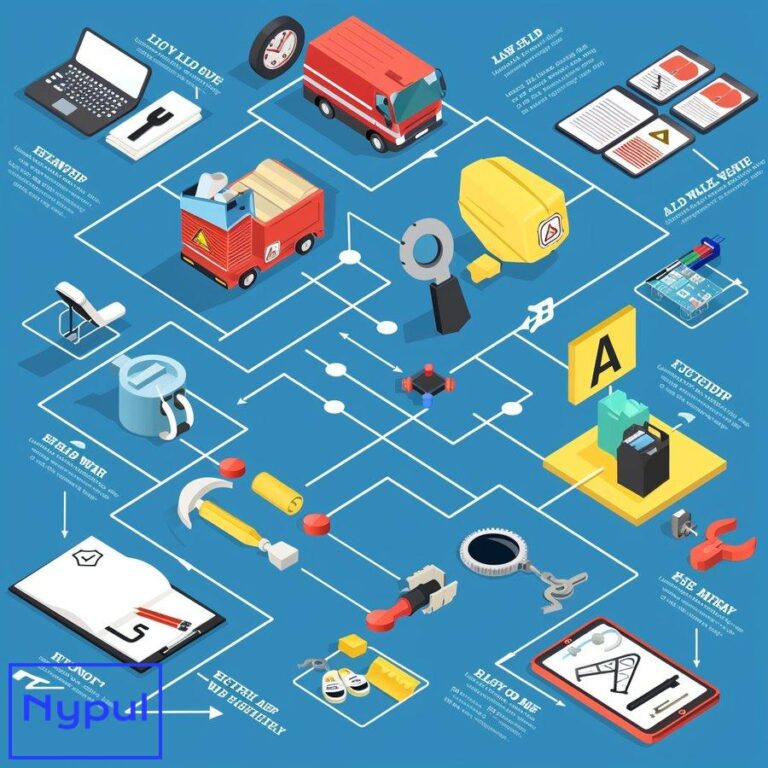How Can You Ensure Real-Time Visibility in Order Management
What is real-time visibility in order management?
Real-time visibility in order management refers to the ability to access and track order information instantly throughout the supply chain. This concept encompasses the monitoring of order status, inventory levels, shipment tracking, and customer interactions, enabling stakeholders to make informed decisions quickly. The essence of real-time visibility lies in its capacity to provide accurate, up-to-the-minute data that enhances operational efficiency and customer satisfaction.
Real-time visibility serves multiple stakeholders within the logistics ecosystem, including:
![]()
- Retailers: They can track orders from placement to delivery, ensuring timely fulfillment.
- Suppliers: They gain insights into inventory levels and demand fluctuations, allowing for better production planning.
- Customers: They receive updates on their orders, enhancing their experience and trust in the brand.
The integration of real-time visibility into order management leads to several benefits, such as reduced lead times, improved order accuracy, and enhanced customer loyalty. Organizations that prioritize this capability often find themselves at a competitive advantage, as they can respond swiftly to changes in demand and supply chain disruptions.
How can you implement a centralized data system for order visibility?
A centralized data system acts as the backbone of real-time visibility in order management. This system aggregates data from various sources, providing a single point of access for stakeholders. Implementing such a system involves several key steps.
Assess Current Systems and Processes

Understanding existing systems is essential. Organizations should evaluate their current order management processes, identifying gaps in data flow and visibility. This assessment helps in designing a system that meets specific needs.
Select the Right Technology
Choosing the appropriate technology is critical for a centralized data system. Options include:
- Enterprise Resource Planning (ERP): Integrates various business functions, providing a unified view of operations.
- Supply Chain Management (SCM) Software: Focuses on optimizing supply chain processes.
- Warehouse Management Systems (WMS): Enhances inventory tracking and order fulfillment.
Data Integration
Integrating data from disparate sources is vital for achieving real-time visibility. This can be accomplished through:
- Application Programming Interfaces (APIs): Facilitate communication between different software systems.
- Data Warehousing: Centralizes data storage, making it easier to access and analyze.
User Training and Change Management
Successful implementation requires training staff on the new system. Change management strategies should be employed to ease the transition, ensuring that all users understand the benefits and functionalities of the centralized system.
Continuous Monitoring and Improvement
After implementation, organizations should continuously monitor the system’s performance. Regular updates and enhancements will ensure that the system remains effective and relevant to changing business needs.
What technologies enable real-time tracking in order management?
Technological advancements play a significant role in enabling real-time tracking in order management. Several technologies contribute to this capability, enhancing visibility and efficiency throughout the supply chain.
Internet of Things (IoT)
IoT devices, such as sensors and RFID tags, collect data on inventory levels, shipment conditions, and location. These devices transmit real-time information to centralized systems, allowing stakeholders to monitor orders effectively.
Cloud Computing
Cloud-based solutions provide scalable and flexible platforms for data storage and processing. This technology enables organizations to access real-time data from anywhere, facilitating collaboration among stakeholders.
Blockchain Technology
Blockchain enhances transparency and traceability in the supply chain. By recording every transaction in a secure and immutable ledger, organizations can track orders and verify their authenticity in real-time.
Artificial Intelligence (AI) and Machine Learning (ML)
AI and ML algorithms analyze vast amounts of data to predict trends and optimize order management processes. These technologies can provide insights into customer behavior and inventory needs, enabling proactive decision-making.
Mobile Applications
Mobile apps allow stakeholders to access real-time order information on-the-go. This accessibility enhances communication and responsiveness, ensuring that all parties are informed about order status.
How can you enhance communication and collaboration for better visibility?
Effective communication and collaboration are essential for achieving real-time visibility in order management. Establishing clear channels and practices can significantly improve the flow of information among stakeholders.
Implement Collaborative Tools
Utilizing collaborative tools, such as project management software and communication platforms, fosters real-time interaction among team members. These tools allow for sharing updates, discussing challenges, and coordinating efforts across departments.
Establish Regular Check-ins
Regular meetings or check-ins among stakeholders can enhance collaboration. These sessions provide opportunities to review order statuses, address issues, and align on priorities.
Create a Culture of Transparency
Encouraging a culture of transparency within the organization promotes open communication. When team members feel comfortable sharing information and insights, it leads to better decision-making and problem-solving.
Utilize Customer Relationship Management (CRM) Systems
CRM systems facilitate communication with customers, allowing organizations to provide timely updates on order statuses. This proactive approach enhances customer satisfaction and trust.
Foster Cross-Departmental Collaboration
Encouraging collaboration between departments, such as sales, logistics, and customer service, ensures that all teams are aligned on order management objectives. This holistic approach improves visibility and responsiveness.
What strategies optimize inventory management for real-time visibility?
Effective inventory management is crucial for achieving real-time visibility in order management. Implementing specific strategies can enhance inventory control and tracking.
Adopt Just-In-Time (JIT) Inventory Management
JIT inventory management minimizes excess stock by ordering materials only as needed. This approach reduces carrying costs and enhances visibility, as organizations can closely monitor inventory levels.
Utilize Automated Inventory Tracking Systems
Automated systems, such as barcode scanning and RFID technology, streamline inventory tracking. These systems provide real-time data on stock levels, locations, and movements, enhancing visibility across the supply chain.
Implement Inventory Forecasting Techniques
Accurate forecasting techniques, such as demand planning and predictive analytics, help organizations anticipate inventory needs. By aligning inventory levels with expected demand, businesses can avoid stockouts and overstock situations.
Regular Inventory Audits
Conducting regular inventory audits ensures that records are accurate and up-to-date. These audits help identify discrepancies and improve overall inventory accuracy, contributing to real-time visibility.
Collaborate with Suppliers
Building strong relationships with suppliers enhances visibility into inventory levels and lead times. Collaborative forecasting and replenishment strategies can ensure that organizations have the right products available when needed.
How can you streamline order fulfillment processes to improve visibility?
Streamlining order fulfillment processes is essential for enhancing visibility in order management. Efficient fulfillment practices not only improve operational efficiency but also provide stakeholders with real-time insights into order statuses.

Automate Order Processing
Implementing automation in order processing reduces manual errors and speeds up fulfillment. Automated systems can trigger notifications and updates, ensuring that all stakeholders are informed about order progress.
Optimize Warehouse Layout
An optimized warehouse layout enhances the efficiency of order picking and packing processes. By organizing products logically and strategically, organizations can reduce the time taken to fulfill orders, leading to improved visibility.
Implement Real-Time Tracking Systems
Real-time tracking systems, such as GPS and RFID technology, provide accurate information on shipment locations and statuses. This visibility allows stakeholders to monitor orders throughout the fulfillment process.
Enhance Packaging Processes
Efficient packaging processes contribute to faster order fulfillment. Streamlining packaging operations ensures that orders are prepared quickly and accurately, minimizing delays and enhancing visibility.
Leverage Data Analytics
Utilizing data analytics can provide insights into fulfillment performance. Organizations can analyze metrics such as order cycle time and on-time delivery rates to identify areas for improvement and enhance visibility.
What measures ensure data security and compliance in real-time order tracking?

Ensuring data security and compliance is paramount in real-time order tracking. Organizations must implement measures to protect sensitive information and adhere to regulatory requirements.
Implement Strong Access Controls
Establishing strong access controls ensures that only authorized personnel can access sensitive data. This can include role-based access permissions and multi-factor authentication.
Utilize Encryption Technologies
Encryption technologies protect data during transmission and storage. By encrypting sensitive information, organizations can safeguard against unauthorized access and data breaches.
Regularly Update Software and Systems
Keeping software and systems up-to-date is essential for maintaining security. Regular updates address vulnerabilities and enhance the overall security posture of the organization.
Conduct Compliance Audits
Regular compliance audits help organizations ensure adherence to industry regulations and standards. These audits identify potential risks and areas for improvement in data security practices.
Provide Employee Training
Training employees on data security best practices is crucial. Educating staff on recognizing phishing attempts and safeguarding sensitive information promotes a culture of security awareness.
How do you measure and improve visibility performance in order management?
Measuring and improving visibility performance in order management requires a systematic approach. Organizations can utilize specific metrics and strategies to assess their visibility capabilities and identify areas for enhancement.
Define Key Performance Indicators (KPIs)
Establishing KPIs is essential for measuring visibility performance. Relevant KPIs may include:
- Order accuracy rate
- On-time delivery rate
- Inventory turnover ratio
- Lead time variability
Utilize Data Analytics Tools
Data analytics tools can provide insights into visibility performance. By analyzing data trends and patterns, organizations can identify bottlenecks and areas for improvement.
Conduct Regular Performance Reviews
Regular performance reviews allow organizations to assess their visibility capabilities. These reviews should involve analyzing KPIs, discussing challenges, and identifying opportunities for improvement.
Solicit Feedback from Stakeholders
Gathering feedback from stakeholders, including customers and employees, can provide valuable insights into visibility performance. This feedback can inform strategies for enhancing visibility and addressing pain points.
Continuously Optimize Processes
Continuous optimization of order management processes is essential for improving visibility. Organizations should regularly assess their workflows, identifying inefficiencies and implementing improvements to enhance visibility over time.
In conclusion, achieving real-time visibility in order management involves a combination of technology, processes, and collaboration. By implementing centralized data systems, leveraging advanced technologies, enhancing communication, optimizing inventory management, streamlining fulfillment processes, ensuring data security, and measuring performance, organizations can significantly improve their order management capabilities. This proactive approach not only enhances operational efficiency but also fosters stronger relationships with customers and partners, ultimately driving business success.




